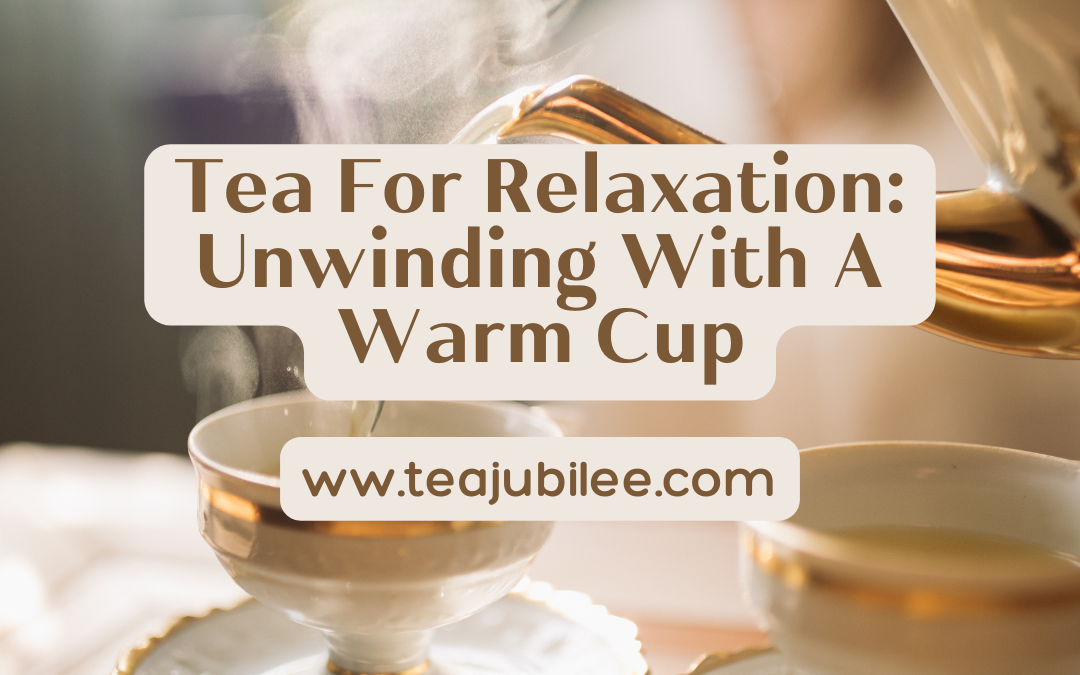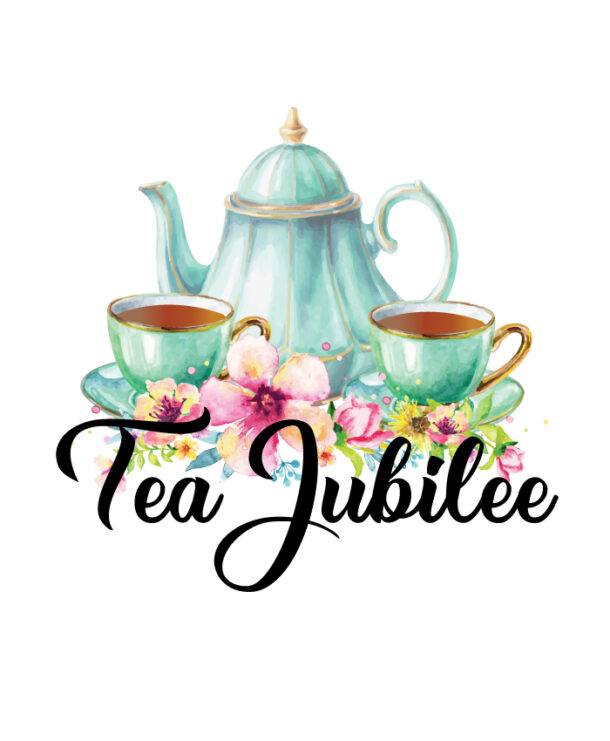==================
A Caveat and Affiliates
First off, a little caveat: within my articles you will find affiliate links, meaning if you buy them, I get a small commission. Your cost is not affected. In addition, I am an Amazon Associate and I earn from qualifying purchases on Amazon.
And yes, if I say that I recommend a product here, it means I truly believe it is a good product. I refuse to recommend any product that I have not researched and believe to be a good value.
Even better, I provide you with a very clear picture of the product, it’s use, and the probable value.
Earning your trust is important to me. I run this website myself and the commissions and donations help support the site.
Sound reasonable and fair enough? Let’s continue to the article.
==================
Contents
Tea For Relaxation: Unwinding With A Warm Cup
Do you know about the relaxing part of sipping a cup of tea each day? I have this blog post about Tea for Relaxation so you can reap the benefits of tea at any time of the day.
In ancient China, tea was a part of spiritual ceremonies; in Japan, it laid the foundation for the Zen-influenced tea ceremony, a practice that endures to this day. These traditions have one thing in common: tea is a medium for mindfulness and tranquility.
This isn’t just about history; it’s also about the resurgence of tea as a modern-day solace. With stress levels peaking in the 21st century, tea has found its way back into the spotlight as a trusted ally in the battle against the hustle and chaos of everyday life. I’ll explore how a simple cup of tea can be the ticket to escaping the noise, if only for a few precious moments.
You’ll discover how preparing and enjoying a cup of tea can be a mindfulness practice, encouraging the drinker to slow down and appreciate the here and now.
The influence of historical tea rituals on today’s stress relief practices is an example of how some things withstand the test of time, offering the same benefits to modern society as they did generations ago.
Understanding the roots of this practice enhances the enjoyment and gives depth to the simple act of drinking tea. As we delve into tea’s role in our lives today, consider how this ancient beverage can be tailored to your rituals of rest and reflection. Choose a variety that resonates with you and appeals to your taste buds and your need for a calming respite.

Steeping in Serenity: Choosing the Right Tea for Relaxation
So you’re looking to unwind with a hot cup of tea. I’m here to help you pick the one that will make you feel most comfortable. Choosing the right tea for relaxation is more nuanced than you might think.
The properties of relaxing teas are diverse. Some teas are cherished for their gentle, sedative effects, while others boast a calming aroma that can soothe the soul. The key is knowing which tea has the qualities that align with your relaxation needs.
Cultural preferences play a big role in this selection process. For instance, in many East Asian cultures, green tea is a go-to for stress relief, while South Americans may opt for yerba mate to relax. It’s fascinating to see how different regions have cultivated their traditions around tea and relaxation.
When picking a tea, consider your caffeine sensitivity. If you’re prone to jitters, herbal teas like chamomile or valerian might be your best bet. But if a little caffeine doesn’t bother you, oolong or white tea can offer a gentle uplift without overstimulation.
It’s not just about choosing a kind of tea; flavor preference matters, too. Some people find comfort in a rose-infused herbal blend’s sweet, floral notes, while others might favor the earthy tones of a good quality pu-erh. Choose something that resonates with you, and you’re more likely to feel its calming effects.

The Aromatic Guide to Relaxation: Benefits of Various Tea Types
You’ll learn about the impressive array of alternatives available when you delve into the world of teas for relaxation. It’s not just about the classic chamomile; the palette spans far wider.
Chamomile tea, often hailed as the go-to for a calm mind, brings a sense of peace due to its mild sedative effects. Lavender tea, with its distinctive floral aroma, alleviates stress and anxiety. Beyond its refreshing taste, peppermint tea can help relax your muscles and boost digestion.
A lot is happening in your cup, more than you might realize. The antioxidants present in these teas, such as flavonoids, contribute to their relaxing properties. They combat oxidative stress in your body, which stress can elevate, aiding overall wellness.
The less-trodden paths of the tea world also hold serene secrets. Think of a cup of valerian root or lemon balm tea, each with unique calming qualities that several cultures have embraced for centuries.
But how does this translate to your daily routine? Combining these teas with the right preparation techniques I’ll cover next can elevate their efficacy and transform your tea drinking into a relaxation ritual.

Brewing a Moment of Calm: Tips for Preparing the Perfect Relaxing Tea
You’ll find ways to transform your tea drinking-into a sanctuary of serenity. It’s not just about dunking a tea bag in hot water; there’s an art to it.
I’m here to help you understand how to enhance the calming effects through the right brewing techniques. Optimal water temperature and steeping times are not just details; they are essential.
For example, delicate teas like green or white should never be scalded with boiling water. It’s more about coaxing the flavor out gently. And with herbal teas such as chamomile or lavender, a longer steep extracts those soothing properties we seek.
Then there’s setting the stage for relaxation. You might want to dim the lights, light a scented candle, and let your favorite soothing melodies play softly in the background.
Finally, considering what you pair with your tea can enhance your relaxation. A small piece of dark chocolate or nuts might be just the thing. It’s about creating an experience that engages your senses and calms the mind.
Now imagine integrating these brewing rituals into your daily winding-down routine. The next section will explore how embracing globally inspired tea traditions enriches this experience.

Globally Inspired Tea Traditions to Wind Down Your Day
Incorporating a tea ritual into your evening can transform your wind-down routine into something special. Let’s take inspiration from worldwide: the Japanese tea ceremony, known for its philosophical and meditative qualities, prioritizes presence and intentionality. It’s not just about drinking tea; it’s about celebrating the moment.
Similarly, British afternoon tea is a practice of relaxation, providing a break in the day to slow down, enjoy a warm cup, and perhaps some company. While you might not have time for a full afternoon break, even sitting with your tea can be a soothing buffer between your busy day and a restful evening.
I suggest choosing one aspect from these elaborate traditions that resonates with you. Is it the meticulous preparation, the serene setting, or the act of sharing this time with others? Integrate this into your nightly routine to create a personal ceremony that signals your body it’s time to relax and recharge.
By adopting these global insights into our tea-drinking habits, we’re not just enjoying a beverage but participating in a timeless ritual promoting peace and mindfulness. So tonight, choose your favorite calming tea, embrace the practices that speak to you, and let the world slip away as you sip your way to tranquility.
More From Tea Jubilee
And that’s all for today!
Thank you for reading all about tea for relaxation; if you found this helpful, feel free to let me know what you liked about this by leaving a comment below.
Have a great day!




